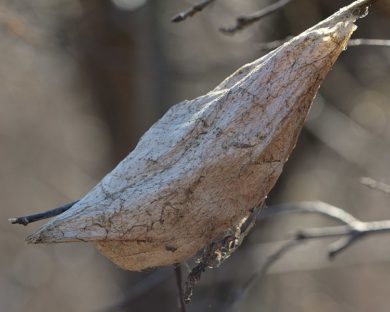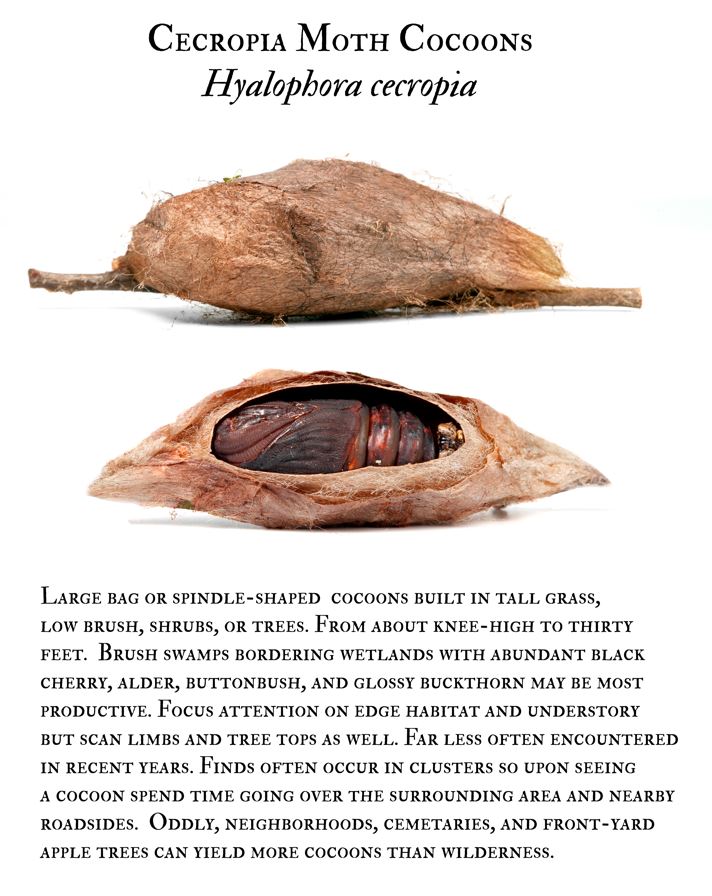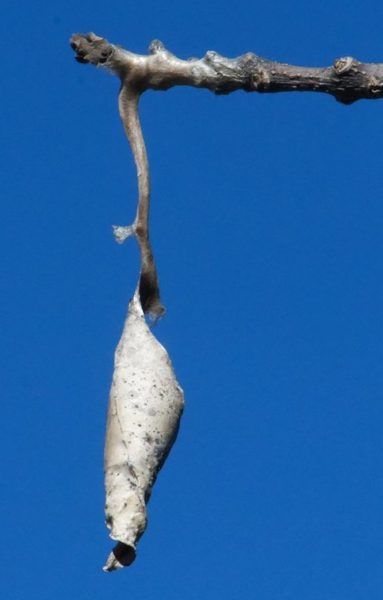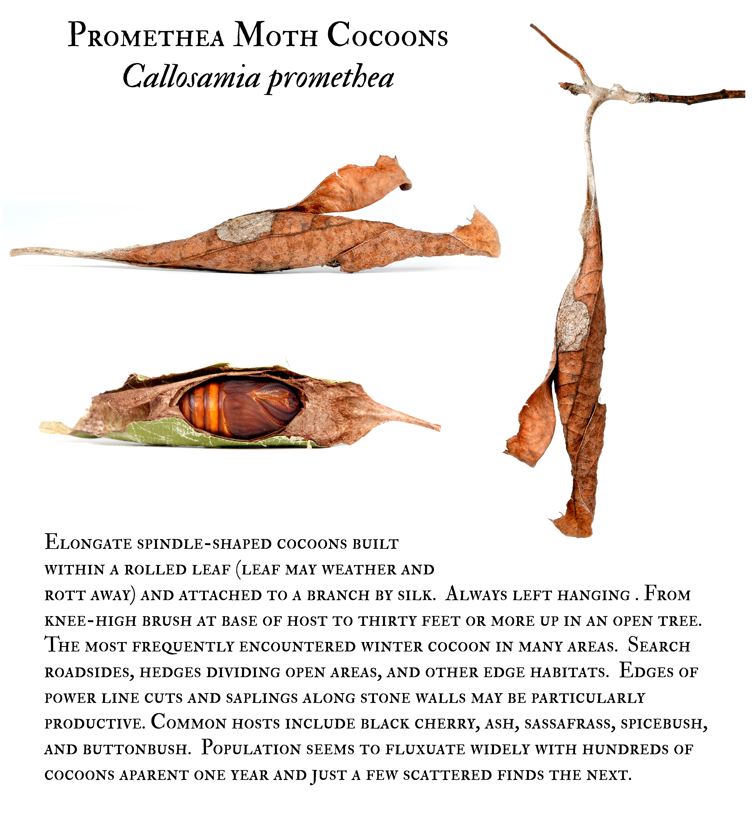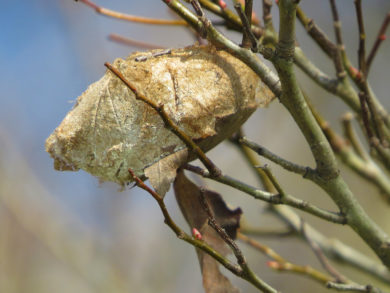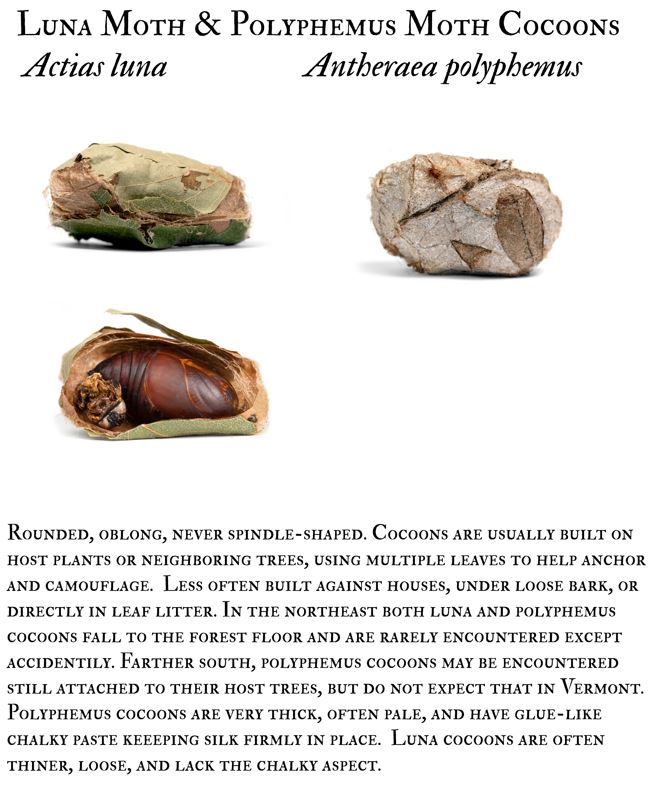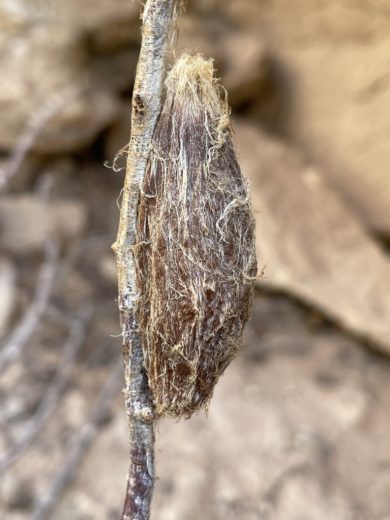We need your help in recording Giant Silk Moth observations in Vermont. You can report your sightings to our iNaturalist project. Cocoons can be found by searching branches of trees and shrubs, and looking at leaves that remain attached to the trees. Luna Moth cocoons can be harder to find, as they will be in the leaves on the ground. Cocoon Watch calls on community naturalists across the state to find and document silk moth cocoons by photographing them and uploading your observations to The Giant Silk Moth Coccoon Watch 2022 project on iNaturalist. If you can, return to the location of the cocoon in spring and document if the moth (or a parasite) emerges.
THree Easy Steps for Cocoon watch
1. Search and Discover Cocoons
As you stroll outside this November, check trees and shrubs of host plants for these large cocoons. When you find one, photograph it to share your observation with the project.
Most Vermont species of Giant Silk Moth attach their cocoons to trees, shrubs and other vegetation, either directly to twigs and branches (Cecropia Moth, Polyphemus Moth), within a leaf that is reinforced to remain attached to a twig (Promethea Moth), or to the trunk of a tree (Columbia Moth). Luna Moths create their cocoon within curled leaves as well, but do not reinforce the leaf, so their cocoons fall to the forest floor with the leaves and can be difficult to find. Cocoons may be located higher in the branches (binoculars are helpful!), or closer to the ground in younger host trees and shrubs. Cocoons are large (up to two inches), and may be spun in more protected parts of the twigs and branches, or may hang from a twig, appearing to be the last leaf remaining on the plant.
2. Share Your Observations
Join the Vermont Giant Silk Moth Cocoon Watch 2022 project on iNaturalist and post your observations! New to iNaturalist? Visit the getting started page.
3. Identify Your Sightings
If you don’t know which species it is, just identify it as a Giant Silk Moth and others will help with identifications. But here’s a quick guide to help you find and identify these cocoons:
Cecropia Moth
- Off-white, tan to brown in color
- Tight and slim, or looser and baggier in appearance
- Cocoons are attached lengthwise to twigs in exposed areas (usually tighter cocoons) or spun in the grass at the base of a host plant (usually baggier cocoons). Searching for baggier cocoons at the base of isolated cherry and apple trees growing along fences and roadsides can be useful.
- Preferred Host Plants: Apple, ash, box elder, cherry, lilac, poplar, sassafras, and willow
Promethea Moth
- Light gray or tan silk
- Spun inside a leaf that remains attached to the tree by reinforcing the leaf petiole with silk. Silk covers the entirety of the leaf that the cocoon is spun into.
- Young cherry trees are a good place to search
Polyphemus Moth
- Tan to off-white.
- Thick and elliptical in shape – almost as wide as they are long.
- Cocoons may be spun in a number of different ways – attached longitudinally along the twig, hang on a twig from a silk peduncle, spun in the leaves and falling to he ground with leaf senescence, or spun into leaves and grasses on the ground.
- Many individuals descend from the host plants and pupate in the leaf litter.
- Favorite host plants include: Betulaceae (birch), Rosaceae (rose), Salicaceae (willow) families
Luna Moth
- Off white to light brown
- Wrapped inside leaves and spun in the leaf litter, but the silk does not entirely cover the leaf the way Promethea cocoons are spun.
- Favorite host plants include: Paper Birch and other Birch species, black gum, hickory, pecan, persimmon, sweetgum, and walnut.
Columbia Moth
- Brown
- Cocoons are quite a bit smaller than your average Cecropia, and sometimes squatter, and less spindle shaped.
- Focus searches near the base of Tamarack and Pin Cherry in boggy areas. Cocoons are spun close to the ground, and may be found in areas with dense underbrush. This is a species that you only really find in appropriate habitat on the aforementioned hosts!
- Favorite species: Larch (Larix) and Pin Cherry
